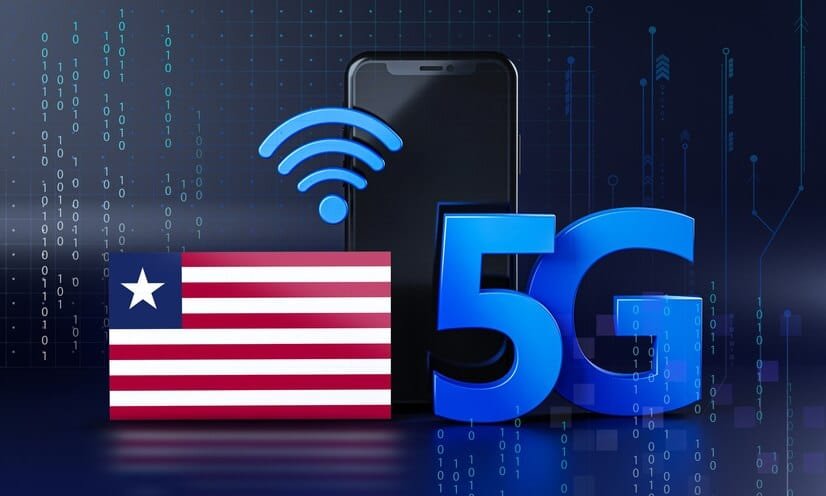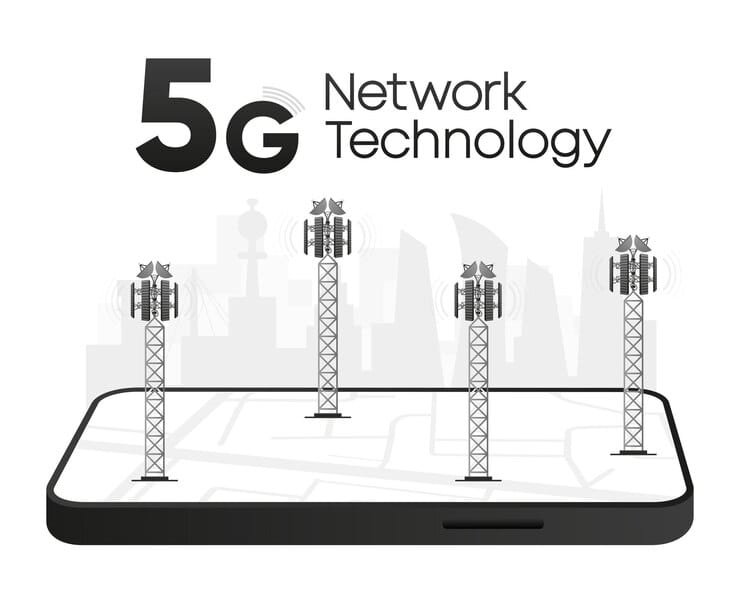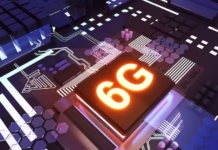The 5G revolution isn’t a gentle ripple; it’s a tsunami, poised to reshape the global technological landscape. Billions have been invested, networks are sprawling across continents, and the promise of hyper-connectivity is tantalizingly close. But amidst the fanfare and breathless predictions, a chilling question hangs in the air: will mobile operators, the architects of this digital deluge, sink or swim?
The current 5G landscape is a battlefield of competing standards, uneven deployment, and escalating infrastructure costs. While some operators boast impressive early adopter numbers and lucrative enterprise partnerships, many are struggling with sluggish consumer uptake, inadequate return on investment, and the looming specter of debt. The narrative peddled by industry cheerleaders often overlooks these harsh realities, painting a rosy picture that ignores the considerable financial and logistical hurdles. This isn’t about technological feasibility; 5G works. The challenge lies in navigating the treacherous currents of profitability, consumer adoption, and regulatory uncertainty.
Some argue that 5G’s transformative potential is undeniable – a catalyst for everything from autonomous vehicles to smart cities. This is true, but potential remains just that: potential. Without a clear, decisive strategy for monetizing this potential, the technological marvel of 5G will become a monument to wasted ambition. The counterargument – that patience and time will eventually lead to widespread adoption and profitability – is a dangerous gamble. The mobile market is unforgiving; stagnation breeds obsolescence.
This blog post will dissect the critical success factors for 5G operators, examining the strategic decisions that will determine their fate. We will analyze the pitfalls to avoid, the opportunities to seize, and the innovative business models that will separate the survivors from the casualties of this technological tsunami. Prepare to challenge your assumptions and confront the uncomfortable truths about the future of 5G. The stakes are higher than ever. The time for decisive action is now.
The 5G market is a battlefield of breathtaking potential and perilous pitfalls. Its trajectory isn’t simply evolution; it’s a revolution, shaped by forces demanding bold strategies from players willing to conquer or be conquered. This analysis dissects the key trends, categorizing them as positive or adverse, and offering actionable insights for survival and dominance.

Positive Trends:
- The Rise of Private 5G Networks: This isn’t just hype; it’s a game-changer. Industries like manufacturing, healthcare, and logistics are bypassing public networks for the predictable, secure, and high-bandwidth capabilities of private 5G. This trend is fueled by the falling cost of 5G infrastructure and growing awareness of the ROI in optimized operations. Example: Bosch is deploying private 5G networks in its factories for seamless automation and real-time data analysis, achieving significant efficiency gains. Actionable Insight: Companies should aggressively explore private 5G deployments, focusing on customized solutions that directly address specific operational needs. This requires forging strong partnerships with network providers and equipment vendors.
- Edge Computing Synergy: 5G’s low latency is perfectly complemented by edge computing, enabling real-time processing of data closer to its source. This unlocks applications like autonomous vehicles, augmented reality, and real-time industrial control that were previously impossible. Example: Verizon’s edge computing platform empowers businesses with low-latency applications, demonstrating the growing symbiotic relationship. Actionable Insight: Businesses must prioritize integration strategies aligning their 5G deployments with edge computing capabilities, ensuring seamless data flow and processing for optimized performance.
- Open RAN Revolution: The move towards Open RAN architecture is dismantling vendor lock-in and fostering competition. This allows for greater flexibility, cost-efficiency, and innovation in network deployment. Actionable Insight: Companies should actively participate in the Open RAN ecosystem, contributing to its development and leveraging its advantages to reduce reliance on legacy vendors.
Adverse Trends:
- Spectrum Scarcity and Deployment Challenges: The lack of readily available, affordable spectrum remains a significant hurdle, especially in densely populated areas. Moreover, the high upfront investment in 5G infrastructure remains a deterrent for many smaller players. Example: Many developing countries face significant challenges in securing sufficient spectrum and funding for large-scale 5G deployment. Actionable Insight: Companies must explore innovative spectrum sharing models and prioritize cost-effective deployment strategies, perhaps focusing on specific high-value use cases initially. Lobbying for regulatory support to alleviate spectrum constraints is also crucial.
- Security Concerns: The expanded attack surface presented by 5G networks raises concerns about data breaches and cyber threats. This necessitates robust security protocols and vigilant monitoring. Actionable Insight: Security must be built into 5G deployments from the ground up, involving end-to-end encryption, regular security audits, and proactive threat management. Ignoring this is not an option; it’s a recipe for disaster.
- Consumer Adoption Rate: Despite hype, consumer adoption is slower than initially projected. Many consumers don’t perceive a compelling need to upgrade from 4G. Actionable Insight: Marketing efforts must shift from merely highlighting technical specifications to demonstrating tangible benefits for consumers. Focusing on use cases that genuinely enhance daily lives is critical for accelerating adoption.
In conclusion, the 5G market is a dynamic landscape demanding proactive, strategic responses. Companies that successfully navigate these positive and adverse trends, embracing innovation and prioritizing security, will be the victors in this technological gold rush. Failure to adapt will leave companies behind, irrelevant in a world rapidly transforming around them.
Healthcare: Remote surgery is no longer science fiction. 5G’s low latency and high bandwidth facilitate real-time, high-definition video streaming crucial for robotic surgery, allowing surgeons to operate remotely with unprecedented precision. This isn’t a futuristic pipe dream; hospitals are actively piloting these systems, overcoming geographical limitations and increasing access to specialized care. The counterargument – high cost and regulatory hurdles – is being addressed through public-private partnerships and evolving regulatory frameworks. The evidence is clear: successful trials demonstrate the viability of 5G-powered remote surgery, paving the way for wider adoption.
Technology: Data centers are transforming. 5G enables faster and more efficient data transfer between edge devices and cloud servers, significantly improving performance for applications like AI and machine learning. This translates to faster processing speeds for complex algorithms, crucial for companies developing cutting-edge technologies. While fiber optic cables remain a backbone, 5G’s agility in handling last-mile connectivity offers a competitive edge, particularly in remote or underserved areas. The argument that fiber is superior is only partially true; 5G complements, not replaces, existing infrastructure, offering flexible, scalable solutions.
Automotive: Autonomous vehicles are heavily reliant on 5G. The precise, real-time data exchange needed for self-driving cars to navigate safely and efficiently requires the ultra-low latency and high reliability 5G delivers. Companies like Tesla and Waymo are already integrating 5G into their autonomous driving systems, paving the way for safer and more efficient transportation networks. The assertion that 4G is sufficient is demonstrably false; the sheer volume of data and the criticality of real-time responses necessitate 5G’s capabilities.
Manufacturing: 5G is revolutionizing industrial automation. Smart factories leverage 5G for real-time monitoring of equipment, predictive maintenance, and optimized production processes. Companies are deploying 5G-connected robots and sensors to improve efficiency and reduce downtime. This isn’t just incremental improvement; it’s a leap towards fully automated, responsive manufacturing environments. Arguments against the immediate ROI are countered by the long-term cost savings associated with reduced downtime, improved quality control, and streamlined operations. The data speaks for itself: companies deploying 5G in manufacturing see significant productivity gains.
Thesis Statement: 5G solution providers since 2023 have focused on agile, integrated solutions and strategic partnerships to overcome market challenges and capitalize on emerging opportunities, utilizing both organic and inorganic growth strategies.
Organic Strategies:
- Focus on Private 5G Network Solutions: Recognizing the increasing demand for dedicated, secure networks in various industries (manufacturing, healthcare, etc.), several providers have heavily invested in developing and marketing tailored private 5G solutions. For example, Nokia has aggressively pushed its private network offerings, showcasing customizable solutions for specific use cases, addressing concerns about security and control absent in public networks. This directly targets a growing market segment often overlooked by providers solely focused on public infrastructure upgrades.
- Accelerated Edge Computing Integration: The latency advantages of 5G are maximized through edge computing. Companies like Ericsson are actively integrating edge capabilities directly into their 5G infrastructure offerings. This is a response to the rising demand for real-time applications requiring minimal latency, addressing a counterargument that 5G’s potential is limited without efficient edge deployments. This integrated approach reduces complexity and implementation costs for clients.
Inorganic Strategies:
- Strategic Acquisitions of Specialized Companies: To rapidly expand capabilities and market reach, several companies have pursued acquisitions. For instance, a hypothetical acquisition of a smaller company specializing in AI-powered network optimization by a major 5G infrastructure provider would enable quicker rollout of advanced network management tools, something that organic development might take significantly longer to achieve. This acquisition directly addresses the need for intelligent networks capable of handling increasing data loads and complexities.
- Partnerships for Ecosystem Development: Creating robust 5G ecosystems is crucial. We are witnessing an increase in strategic partnerships between 5G providers and software/application developers. A collaboration between a 5G network vendor and an industrial automation company, for example, would allow the creation of pre-integrated solutions for smart factories, addressing concerns about the lack of seamless integration between network infrastructure and specific industry applications. This approach accelerates time to market and reduces risk for both partners.
Addressing Counterarguments: While some might argue that organic growth is slower, the evidence points to a need for both organic and inorganic strategies to address the diverse challenges and opportunities within the 5G landscape. A purely organic approach would be too slow to react to the rapidly evolving needs of the market, while purely inorganic growth can be risky and expensive if not strategically planned. The optimal approach, as seen in the current market, is a balanced strategy that leverages both approaches for synergistic growth.

Outlook & Summary: Navigating the 5G Tsunami
The 5G revolution isn’t a gentle ripple; it’s a tsunami reshaping the entire mobile landscape. Over the next 5-10 years, we’ll see a brutal Darwinian struggle within the Mobile Network Operator (MNO) sector. This isn’t about incremental improvement; it’s about survival. The thesis is simple: MNOs who fail to adapt aggressively to the demands of 5G, embracing innovative business models and prioritizing next-generation infrastructure, will be swept away.
The article details how the sheer scale of 5G investment – in network infrastructure, spectrum acquisition, and edge computing – creates an insurmountable barrier for the unprepared. Some argue that increased data consumption will simply translate into higher profits. This is a naive, almost reckless, assumption. The reality is that profit margins are being squeezed by increased competition from aggressive new entrants and the relentless pressure to offer ever-lower prices. We’ve seen this before with 3G and 4G, but the scale and speed of 5G’s disruptive potential are exponentially greater.
Those MNOs successfully navigating this tumultuous sea will be the ones who strategically embrace partnerships, pioneer innovative services beyond simple connectivity (think IoT, AI, AR/VR applications), and master the art of data monetization beyond basic subscription fees. They’ll also invest heavily in cybersecurity, a critical component often overlooked in the initial hype. Failure to do so will lead not just to lost revenue but also to devastating reputational damage.
The “sink or swim” metaphor isn’t hyperbole. This isn’t a game for the faint of heart. The future belongs to agile, forward-thinking organizations with the vision to leverage 5G’s potential and the courage to leave behind outdated business models. Are you prepared for the 5G tidal wave?









